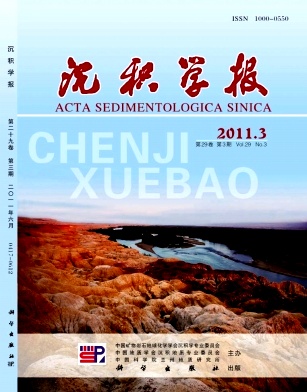REE Characteristics and Its Geological Significance of Buqu Formation Carbonate Source Rocks in Nadigangri Area, Qiangtang Basin of Tibet
- Received Date: 1900-01-01
- Rev Recd Date: 1900-01-01
- Publish Date: 2011-06-10
-
Key words:
- Qiangtang Basin /
- Nadigangri area /
- Buqu Formation /
- carbonate source rocks /
- REE
Abstract: Rare earth element concentrations were determined in 15 Middle Jurassic carbonate source rocks from Buqu Formation in Nadigangri area, Qiangtang basin of QinghaiTibet Plateau. The results show that analyses of the REEs, especially ΣREE,Ce/Ce* values and Eu/Eu* values change regularly,which are closely related to it’s sedimentary environment. The total REE contents (ΣREE) of Buqu Formation marine carbonate source rocks cover a range from 20.58 μg/g to 75.21 μg/g,and the average value of all samples is 36.67 μg/g. The NASC(North American Shale Composite) normalized REE patterns display low REE enrichments and relatively high REE loss, the LREE patterns are a little rightward heeling, and the HREE patterns are flat. However,the different ΣLREE and ΣHREE in the samples infer that REE was removed and HREE was more easily removed than LREE, sedimentary environment evolution may be in sound relationship with rising of the sea level rising. They all have slightly negative Ce anomalies(Ce/Ce* values are from 0.83 to 0.93,and the average is 0.88),most of them have slightly negative Eu anomalies ,and others have positive Eu anomalies(Eu/Eu* values are from 0.68 to 1.58,and most of them are less than 1).These features are probably due to the geochemistry of weak oxidation of sedimentary environment for Buqu Formation carbonate source rocks in Nadigangri area of Qiangtang basin, but with vertical variation of both sedimentary environment and water column stratification.Being the continuous of expansion of transgression and the water column's stratification effects, some water column in the bottom become into reducing environment for lacking of oxygen.
| Citation: | CHEN Wenbin. REE Characteristics and Its Geological Significance of Buqu Formation Carbonate Source Rocks in Nadigangri Area, Qiangtang Basin of Tibet[J]. Acta Sedimentologica Sinica, 2011, 29(3): 529-536. |






 DownLoad:
DownLoad: